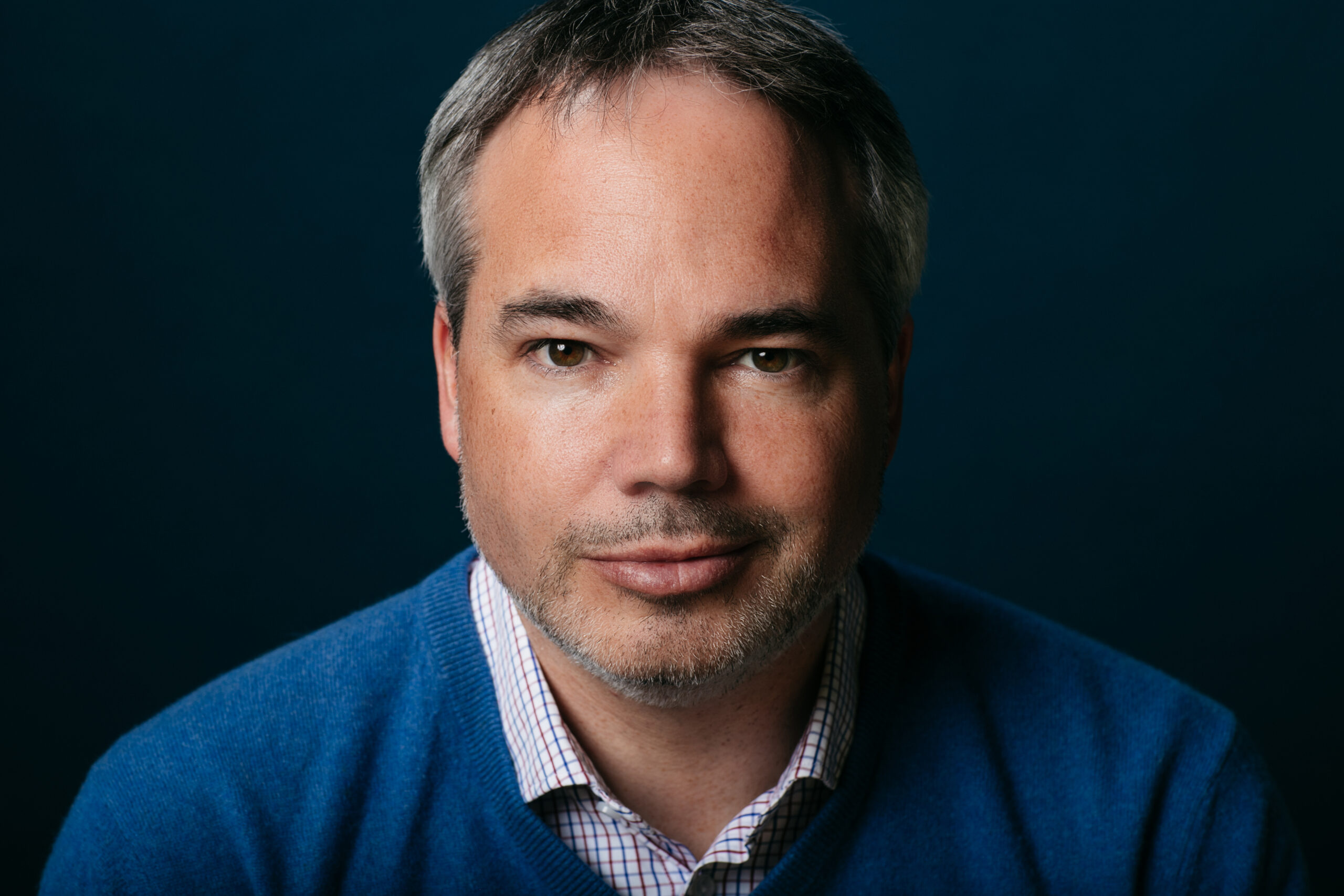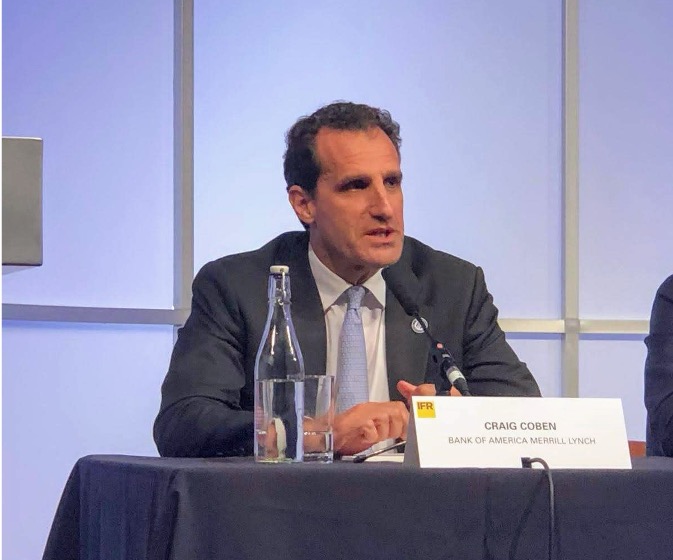Technological advances have caused a paradigm shift in the way we consume news. But as long as we retain the core values of editorial excellence and design, we have nothing to fear. On the contrary, journalism has the potential to become better than ever before.
A dying species?
I vividly recall a visit by some European print media executives to the Google Campus in Silicon Valley a few years back. There is a gigantic statue of a Tyrannosaurus rex there and, since we represented an industry that people were already starting to call “the dinosaur profession”, we thought it would be an obvious joke to have our photo taken in front of it. We asked a young Google employee to assist us and gave her our cameras. “Sure,” she said, and asked us, “Where’re you guys from and what do you do?” “We’re in the print media business, magazines and newspapers,” we replied. “Oh!” she said. Her face lit up. “Magazines and newspapers! That print thing. Yeah, I’ve heard about it.”
“That print thing” – that is certainly one way of looking at our jobs. But dinosaurs are dead – print isn’t. And anyway, we are not in the printing business. We gather, analyze, reshape and deliver news. If anything, it should be called “that news thing”!
“If you keep saying ‘newspaper’, there’s the risk you constrain your thinking. We distribute our branded proposition in several ways, one of which is … on paper.” (Mike Darcey, CEO News UK)
And indeed, unlike those poor enormous old animals, we do not need to fear the future. Time is playing into our hands. That is because technology is increasingly understood to be a means to an end, while content is what really matters. The latest Samsung Galaxy without content would be – a phone. Nothing more, nothing less. Technology providers have given us new platforms and it is up to us to feed them.
The development of news journalism
In its recent history, news journalism has passed through three phases: In Stage 1, before the dawn of the internet, the focus was exclusively on content. Technology did not play an important role and any self-respecting media executive let someone lower down the command chain deal with technology issues.
Stage 2 came out of the blue. All of a sudden, there was a revolution within a few years. Everybody was fascinated by technology and content was more or less a tool. At this point, comments such as “I don’t read the news. News will find me.” became trendy.
Fortunately for us – and for the originators of these comments – nobody says things like that nowadays. More than ever before, consumers need to trust their sources of information.
Yes – there is mass intelligence out there on the web, but there’s also mass stupidity.
With an abundance of information, the likes of which has never been seen before, it has become paramount that consumers digest news, and so they need to be able to trust their news provider.
We are now entering Stage 3, in which technology and content come together. Combining the two provides the real value. Neither of them can exist as a stand-alone feature. The movie industry has taught us that no matter how perfect and spectacular special effects might be, a film is nothing without its story. And as journalists, we are in the business of telling stories.
The other big change in Stage 3 is the convergence of media. Formerly there was audio, moving pictures and words with pictures. Now – it all exists together. Welcome to the iPad era!
The printed future
So where does that leave printed newspapers? Michael Parks, former professor of journalism, Pulitzer Prize winner and editor-in-chief of the Los Angeles Times summarized it in a few simple words.
“(printed) newspapers will not die ‘as long as there are buses, breakfasts and toilets’…” (Miachel Parks)
And I share his belief. There is nothing that will replace magazines anytime soon that can be read on sandy beaches, tossed around between friends or used to kill the bug that just bit you. For the foreseeable future there will be a printed market. But habits are changing fast.
Edmund Stoiber, the former prime minister of Bavaria, once told me a story about his young granddaughter. He was sitting at the breakfast table on a weekend morning, drinking coffee and skimming the local newspaper. The little girl approached him, looked at the newspaper and tried to swipe one of the pictures with her finger. Stunned, she looked at her grandfather and said: “Kaputt!”
The digital future
What we make out of this rapid technological change is up to us, and the developments so far have been more than promising. Some time ago I said that news publishers should pray to Steve Jobs once a day and thank him for having invented the iPad – for having invented the tool that is opening up so many possibilities.
In early October this year I went to visit the editors’ conference of the German edition of Rolling Stone Magazine in Berlin. The team had asked me to have a close look at their latest publication and simply tell them what I liked and what I did not like. “Sure”, I said, and looked forward to reading “that music thing”.
The magazine is published in many countries and has been around for decades. It is full of articles about songwriters and artists, recommendations, and reviews of the latest records. As magical and beautiful as it is to read words about music and to let the authors inspire you to listen to what they believe is worth listening to, one thing is missing in the magazine. There is no actual audio. Still, the magazine is successful all over the world.
Now there is a Rolling Stone iPad app. It offers the same great value as the printed magazine, and much more. When you are reading a review about the best ever jazz songs, the iPad app lets you listen to those songs in real time. It is not only convenient; it is a whole different user experience. It is – even more fun.
On a more global level, a survey carried out by Axel Springer AG showed that users enjoy reading newspapers and magazines on a tablet much more than they enjoy leafing through the printed edition. That was more than a year ago – in the meanwhile digital newspaper editions have developed even further. And tablet sales are increasing steadily. Also, it goes without saying that there are more internet users than ever before. The scenarios are positive.
Ensuring the financial future of journalism
But not everything has reached an optimal level yet. The way people have gotten used to the internet has created a legacy for us that we – the entire ecosystem – are suffering from and that will take a lot of energy to change. I am talking about the free online culture. At the beginning things on the net were free. Nobody considered paying for e-mails, or even for music or films. Publishers were at the forefront of creating this free online culture. Whilst music labels at least tried to stop illegal downloading platforms, newspapers gave away their content for free. The internet was seen as a secondary channel and media executives did not fear putting their content out there free of charge. This was an error – but one that still can be rectified, as challenging as this might be. It is about the quality of journalism and its independence. Independence is the most important prerequisite for journalism. Any influence on content by governments or political parties restricts the freedom of the press and readers will disapprove of it. But this journalistic independence also needs a sound financial backing.
Journalistic quality will only be financially viable if two sources of revenue are available: advertising, and readers who pay for journalistic content.
There are promising signs that readers are actually willing to pay for quality digital journalism. The New York Times is regarded as a kind of pioneer when it comes to digital subscription models. Recently they have issued a statement saying to now have 700,000 digital subscribers, up 35% from the year before. And many other newspapers are reporting similar trends.
Last year we introduced a premium model on the website of Die Welt, allowing readers who wish to read more than twenty articles per month to buy digital access. Figures are positive and subscriptions are increasing. All in all, we are gaining more digital subscribers than we are losing in print customers. Bild followed suit several weeks ago and now offers exclusive news stories only to readers with subscriptions – news which is not available elsewhere.
The protection of value
The other important prerequisite for a sustainable digital business model is proper copyright protection. Back in the day it would not have been feasible to physically copy papers and then redistribute them. In the online world, this is done in two simple steps – copy and paste. In most countries the legal situation is still unclear: how much of an article can be reproduced on one’s own website or blog? Is a link to the original source mandatory? Can I remarket the copied content? And so on. In Germany we now have a regulation that outlines the terms between those that produce journalistic content and those who remarket it. Other countries will probably follow suit soon, and further agreements will have to be made between content providers and platform providers such as search engines or news aggregators.
Knowing that these developments are under way, we can only be optimistic. Digital journalism is set to take off and the best is yet to come. The present age is not that different to the era when Gutenberg invented the printing press, or the day of the first television news broadcast, when moving pictures were first transmitted into people’s homes. We are in the midst of another revolution powered by innovation. There is no better time for publishers than now.








